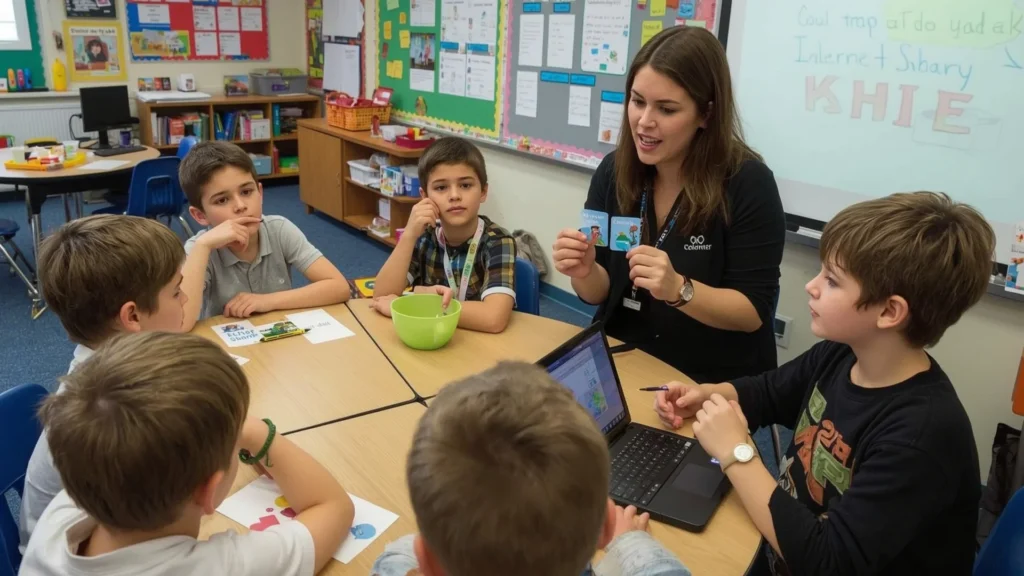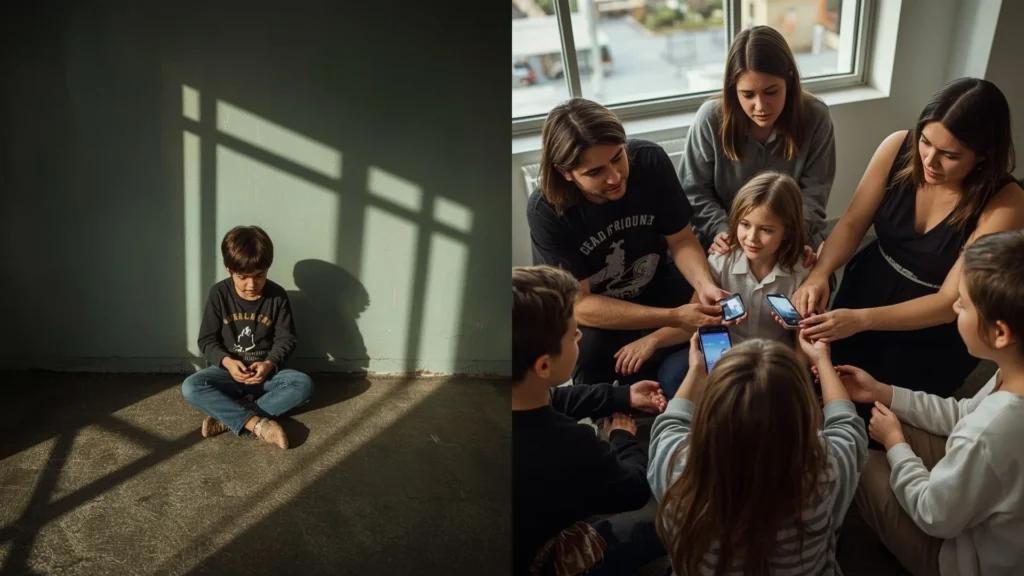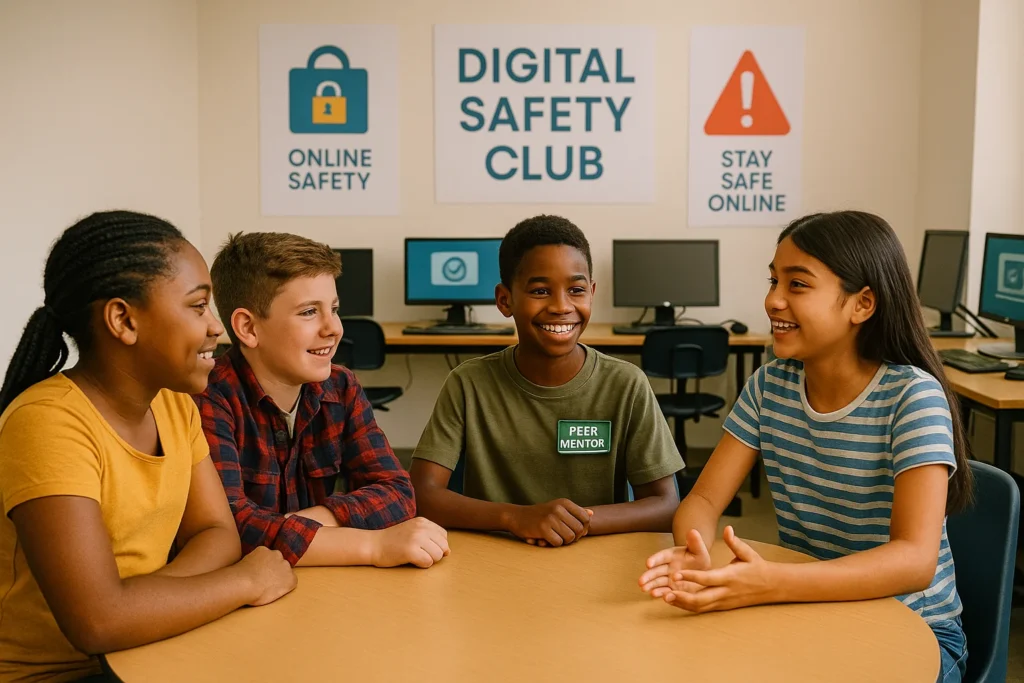Introduction: The Digital Dilemma That Should Alarm Every Parent
Imagine your 10-year-old child chatting online—not just about homework but also sharing personal stories with strangers bunkered behind usernames. With 40 million internet users in India under 18, the risk of online sexual exploitation looms large. No parent wants to concede that their child could become prey in a digital world that evolves faster than any safety guidelines. Therefore, it becomes important to prevent online sexual exploitation against kids. However, pilot research conducted by the Karnataka State Commission for Protection of Child Rights (KSCPCR) and ChildFund India indicates that this threat is genuine and expanding.
Beginning from primary school, we must empower our children with proactive skills to protect themselves—and that starts with embedding digital literacy and online safety into their daily lives. This article reveals seven proven steps for parents, educators, and policymakers to collaboratively build safer online environments.
What Does the Karnataka Pilot Study Reveal About OSEAC?
Why This Study Matters—And Who It Covers
The survey focused on 903 children, aged 8 to 18, across five districts—Chamarajanagar, Raichur, Chikkamagaluru, Belagavi, and Bengaluru—with equally weighted representation from rural, urban, school-going, and out-of-school groups. An inclusive design brought nuanced insights into how children across walk of life experience digital risks.
Key Statistics That Demand Urgent Action
- Surge in Online Risks Post-COVID: The study repeatedly highlighted that the pandemic’s remote-learning shift dramatically increased children’s exposure to predators via unsupervised screen time.
- Survivor Silence: Disclosure remains low—stigmas, shame, and absent reporting pathways continue to keep many in the dark.
- Parental & Teacher Gaps: Lack of training, tools, and awareness hindered early prevention and appropriate escalations.
KSCPCR’s Chair, K. Naganna Gowda, emphasized the need for a “holistic view of children’s vulnerabilities”—and the report he released in Bengaluru last Friday does just that.
Digging Deeper—What the Study Methodology Uncovered
Multi-Level Sampling for Fair Representation
- District Level: Five diverse districts selected
- School Level: Six schools per district, mixing rural & urban
- Student Level: 30 students per school across age groups
- Out-of-School Voices: Two nearby children from non-school environments per school
This rigorous sampling yields data that reflects the lived experiences of Indian children.
Interviews Reveal Real-World Scenarios
Children, parents, teachers, and child protection workers shared stories:
- A 14-year-old from Chikkamagaluru who received explicit messages while playing mobile games
- Mothers in Raichur recommending blocking apps but unaware of reporting hotlines
- Teachers requesting toolkits but lacking funds or training
These anecdotes elevate the study—from cold data to emotional, high-stakes urgency.
Why Digital Literacy Must Be Taught—Starting in Primary Grades
Building Blocks for Safe Digital Behavior

Children aged 8–11 are cognitively capable of grasping online safety basics like:
- Identifying strange requests
- Understanding why they should never share passwords
Making digital safety part of their weekly school lessons normalizes conversation and practice.
How One Toolkit Became a Model for Others
In Bengaluru, educators piloted a toolkit covering age-appropriate modules on:
- Identifying “red flags” (e.g., grooming)
- Seeking help from trusted adults
- Setting digital boundaries
They reported a 30% increase in comfort reporting concerns—proof that knowledge empowers action.
Seven Recommended Actions for a Safer Internet for Children
Here are the practical pillars derived from the study, offering actionable steps:
1. Overhaul Curriculum: Make Online Safety Mandatory
Incorporate weekly lessons on privacy, consent, boundaries, and reporting. Include modules at every school level.
2. Equip Teachers and Parents with Training
- Host digital safety workshops
- Create child-friendly resource packs
3. Promote Open Communication
- Normalize asking “Who are you talking to online?”
- Use non-judgmental approaches—start with “How’s your chat going?”
4. Use Peer-Led Education
Older students can lead sessions, creating relatable environments. Peer mentors often speak the parent caution that kids hear.
5. Form “Digital Safety Champions” in Schools
Staff or trusted students trained as first responders for concerns. A friendly face can destigmatize reporting.
6. Launch Community Awareness Campaigns
Collaborate with organizations such as ChildFund to hold meetings in both rural and urban areas. Use roleplays, print media, and local language messaging.
7. Policy Intervention: Create a Karnataka OSEAC Task Force
Include representatives from education, child protection, law enforcement, and civil society.
Objective: Oversee national rollouts of training, reporting, and rehabilitation programs.
Tackling Barriers—Why Underreporting Persists—and How to Overcome It

Understand the Fear Behind the Silence
Reasons why kids stay quiet:
- Shame & stigma
- Fear of losing access to social media or devices
- Distrust in adults they believe may not take them seriously
Concrete Steps Toward Creating Safe Spaces
- Training adults to receive disclosures with empathy
- Launching anonymous reporting platforms
- Ensuring timely legal and psychological assistance
Bringing It All Together—A Blueprint for Stakeholder Collaboration
Schools and Teachers as Digital Guardians
- Institutionalize digital literacy weeks
- Regularly assess student knowledge, similar to health check-ups
Parents as Active Partners
- Download child-safe apps
- Audit screen-time settings
- Practice weekly check-ins without judgment
NGOs and Law Enforcement to Provide Backup
- NGOs can facilitate awareness and digital literacy campaigns
- Police can fast-track online exploitation reports without case delays
Real-World Inspiration: Success Stories Leading Change

- ChildFund India launched a 72-hour response line for disclosures—a first of its kind in Karnataka
- Teachers in Bengaluru reported an increase in safe reporting after one year of peer-led sessions
These examples prove that when guidance, resources, and trust converge, change follows.
How This Impacts YOU: Parents, Educators, Policy-Makers
- Parents: Introduce at home what children learn in class—be that safety quizzes, discussion nights, or simply knowing their apps.
- Educators: Advocate for your digital safety champion; request resources and peer training.
- Policy-Makers: Push for a statewide OSEAC task force that coordinates schools, tech providers, and mental health professionals.
Beyond 2025—Sustaining Online Safety Progress
Trends to Watch
- AI-driven safety tools: from automatic moderation to parental alerts
- Emerging threats: VR spaces and deepfakes targeting kids
Ongoing Goals
- Update curriculum annually with evolving technology
- Keep community education fresh and relevant
Wrapping Up: The Real Stakes—and the Path Forward
Digital life for children is here to stay. Without active safeguards, their safety online is just as real—and often more immediate—than their general wellbeing. The Karnataka pilot study underscores that digital literacy and regular conversations are non-negotiable. If we stick to the seven steps and foster an ecosystem of trust, training, and timely response, we can aim to make India’s internet not just less dangerous—but empowering for its youngest users.
Quick Recap: The 7 Essential Strategies
| S.no. | Strategy |
| 1 | Make online safety mandatory across all school levels |
| 2 | Train teachers and parents using standardized toolkits |
| 3 | Promote non-judgmental communication channels |
| 4 | Leverage peer-led education to demystify concepts |
| 5 | Appoint Digital Safety Champions in every school |
| 6 | Launch community awareness initiatives |
| 7 | Create a Karnataka OSEAC Task Force for oversight |
Final Word: Turning Awareness into Safe Digital Futures
Creating a safer digital future for our children won’t happen by accident. It needs thoughtful curriculum design, trained adults, supportive policies, proactive communities—and above all, conversations started early and often. The Karnataka pilot study is our wake-up call: every step we take now helps ensure that our children don’t just survive the internet—they thrive in it.


